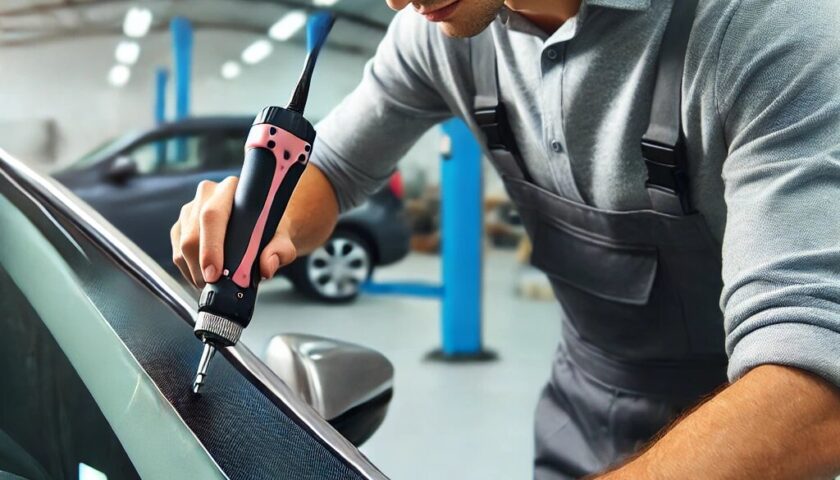Long-term parking can be necessary for various reasons, such as extended travel, seasonal vehicle storage, or even when you have a spare vehicle you don’t frequently use. Regardless of the motive, proper car storage is essential to ensure your vehicle remains in excellent condition during its time off the road. In this guide, we’ll discuss the steps to properly store a car for long-term parking, keeping in mind the importance of preserving its value and performance. If you’re looking to free up some space or generate extra cash, consider services like Cash for Cars North Brisbane (top unwanted car) for assistance with your unused vehicle.
Step 1: Clean and Detail Your Car
Before parking your car for an extended period, give it a thorough cleaning inside and out. Remove all trash and personal items from the interior. Vacuum the carpets and seats, and clean the windows. On the exterior, wash and wax your car to protect the paint from dust, dirt, and UV damage. Cleaning your car prevents mold, mildew, and pests from finding a home in your vehicle.
Step 2: Change the Oil and Fluids
Changing the oil and other essential fluids like the coolant and brake fluid is essential. Fresh fluids will help prevent corrosion and ensure that your car is ready to start when you return. Consider topping off the fuel tank and adding a fuel stabilizer to prevent the gasoline from deteriorating over time.
Step 3: Inflate the Tires
Inflate your car’s tires to the recommended pressure level. Over time, tires can develop flat spots when left stationary, which can lead to damage or vibrations when driving again. To prevent this, you can place your car on jack stands, or simply move it a few inches every few weeks.
Step 4: Disconnect the Battery
If you plan to store your car for several months, it’s a good idea to disconnect the battery. Alternatively, you can use a battery maintainer to ensure it stays charged without overcharging. This step helps preserve the battery life and prevents electrical issues when you start the car again.
Step 5: Protect Against Pests
To keep pests away, close all windows and vents. Place mothballs or cotton balls soaked in peppermint oil around the car’s interior and in the engine bay. Rodents and insects dislike these scents, and it can help deter them from nesting in your vehicle.
Step 6: Cover Your Car
Invest in a high-quality car cover to shield your vehicle from dust, debris, and potential scratches. Make sure the cover is breathable to prevent condensation and moisture buildup, which can cause rust.
Step 7: Choose the Right Storage Location
Selecting the right storage location is crucial. If possible, store your car in a garage or a storage facility that offers climate control. These environments provide optimal protection against extreme temperatures and humidity. If you don’t have access to indoor storage, consider using a carport or purchasing a car canopy to shield your vehicle from the elements.
Step 8: Secure Proper Insurance
Contact your insurance provider to adjust your coverage while the car is in storage. You may be able to reduce your coverage to save money while ensuring your vehicle remains protected against unforeseen circumstances like theft or fire.
Step 9: Maintain a Record
Keep a detailed record of all the maintenance and storage steps you’ve taken. Note the date of each action, such as oil changes, fluid top-offs, and tire rotations. This record will help you keep track of when each task needs to be performed again and can be especially useful for your car’s resale value. Also learn more at gold coast free car removal.
Step 10: Elevate the Car
Consider placing your car on jack stands to relieve the pressure on the tires and prevent flat spots. This is particularly important if you’re planning to store the vehicle for an extended period.
Step 11: Lubricate Moving Parts
Apply lubricant to key moving parts like the door hinges, locks, and the hood latch to prevent them from seizing or corroding over time.
Step 12: Block Off the Exhaust Pipe
To prevent small creatures from crawling into the exhaust pipe, block it off with a piece of cloth or use a specially designed exhaust plug.
Step 13: Check and Renew Registrations
Ensure your car’s registration and inspection stickers are up to date. Depending on your location, you may be required to maintain these even if the car is not in active use.
Step 14: Visit Periodically
If possible, make occasional visits to your stored car. Start the engine and let it run for a short time to prevent seals from drying out and keep the engine in good condition. It’s also a good opportunity to inspect for any issues that may have arisen during storage.
Step 15: Prepare for Reawakening
Before taking your car out of storage, perform a thorough inspection. Check tire pressure, fluid levels, and the condition of the battery. Remove any pest deterrents and clean the interior thoroughly. Once you’re satisfied with the condition of your car, you can confidently prepare it for the road again.
Step 16: Maintain Proper Ventilation
If your storage area has limited ventilation, use desiccant bags or moisture-absorbing products to prevent moisture buildup inside the car. Adequate ventilation helps minimize the risk of mold and mildew growth.
Step 17: Keep the Parking Brake Off
Consider leaving the parking brake disengaged, especially if you’re storing the car for an extended period. Keeping the parking brake engaged for too long can cause the brake pads to stick to the rotors, potentially leading to issues when you try to move the car.
Step 18: Use a Fuel Stabilizer
If you’re storing your car with a partially full tank of fuel, add a fuel stabilizer to prevent the gasoline from deteriorating and causing starting or engine issues. Follow the manufacturer’s instructions for the correct dosage.
Step 19: Protect the Exterior
In addition to using a car cover, consider applying a coat of high-quality automotive wax to the paint. This extra layer of protection can further shield your car’s finish from the elements.
Step 20: Disconnect the Spark Plugs
For prolonged storage, it can be beneficial to disconnect the spark plugs. This prevents the engine from turning over when you start the car, allowing oil to circulate through the engine before ignition, reducing wear.
Step 21: Remove the Wheels
If you’re particularly concerned about your tires during long-term storage, you may choose to remove them entirely and store them separately. This reduces the weight on the tires and prevents flat spotting.
Step 22: Pest Control Measures
Continuously monitor for signs of pests or critters, especially if you live in an area prone to infestations. Keep checking the interior and engine bay for any signs of unwanted guests and reapply deterrents as needed.
Step 23: Battery Maintenance
If you’ve disconnected the battery, periodically charge it using a battery maintainer to ensure it retains its charge and is ready to go when you decide to use the car again.
Step 24: Prepare for Return to the Road
When you’re ready to take your car out of storage, follow a comprehensive checklist for reawakening. This includes checking the brakes, tires, all fluid levels, and running a thorough safety inspection.
By following these additional steps, you can ensure that your car remains in excellent condition throughout its period of long-term parking, whether you’re planning to store it for a few months or an extended period. Properly stored, your vehicle will be ready to hit the road when you decide to use it again.
Conclusion:
Properly storing your car for long-term parking is essential to maintain its condition and value. Following these steps will help ensure your vehicle remains in top shape during its time off the road. If you’re looking to get rid of your unused vehicle altogether, services like “Cash for Cars North Brisbane” can provide a convenient and profitable solution. Whether you choose to store your car or sell it, taking the necessary precautions will benefit you in the long run.





